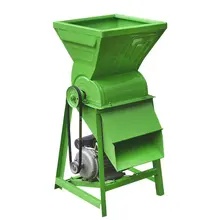cross cutting machine
Novemba . 24, 2024 05:15 Back to list
cross cutting machine
Understanding Cross Cutting Machines A Comprehensive Overview
Cross cutting machines are essential tools in various industries, particularly in woodworking, construction, and metal fabrication. These machines are specifically designed to cut materials across their grain or fiber, delivering precise and clean cuts that are vital for numerous applications. In this article, we will delve into the mechanics, applications, advantages, and types of cross cutting machines, providing insights into their importance in modern manufacturing processes.
What is a Cross Cutting Machine?
A cross cutting machine is a type of cutting device that is primarily used to cut materials—typically wood, metal, plastic, or composites—at a right angle to their grain or length. The primary function of these machines is to reduce larger sheets or pieces of material into smaller, usable sizes while ensuring an accurate and uniform cut.
How Do Cross Cutting Machines Work?
The operation of a cross cutting machine involves a powerful motor that drives a saw blade or cutting tool. The material to be cut is secured on a bed or table, and the operator either manually or automatically positions it for cutting. As the saw blade descends, it cuts through the material while the feed system ensures that the material moves smoothly through the machine. Advanced models may also incorporate features such as digital displays and programmable settings for enhanced precision and efficiency.
Applications of Cross Cutting Machines
The versatility of cross cutting machines allows their use across various sectors
1. Woodworking In furniture production, cabinetry, or flooring, cross cutting machines are indispensable for producing panels, beams, and other components in a variety of sizes. 2. Construction Builders and contractors use these machines to cut structural materials like plywood or lumber to specific dimensions, ensuring consistency and quality. 3. Metal Fabrication In the metalworking industry, cross cutting machines facilitate the precise cutting of metal sheets and rods, vital for creating parts for machinery and construction. 4. Plastics and Composites Cross cutting machinery can also handle plastic and composite materials, which are increasingly popular in various applications due to their lightweight and durable properties.
cross cutting machine

Advantages of Cross Cutting Machines
The adoption of cross cutting machines in manufacturing processes comes with several significant advantages
- Precision These machines are engineered for precise cuts, minimizing waste and ensuring consistency across production runs. - Efficiency With automated options available, cross cutting machines can significantly speed up the cutting process, allowing manufacturers to increase output and meet tight deadlines. - Versatility Many cross cutting machines can handle various materials, making them adaptable to different projects and industry needs. - Safety Modern designs prioritize operator safety, incorporating guards and automated systems that reduce the risk of accidents.
Types of Cross Cutting Machines
There are various types of cross cutting machines available, each designed for specific applications
1. Table Saws Widely used in woodworking, they feature a circular saw blade mounted on an arbor, enabling precise cross cuts. 2. Miter Saws Designed for making angled cuts, miter saws are especially useful for trim work and molding. 3. Band Saws These machines use a long, continuous band of metal with teeth to cut through various materials, offering versatility in design. 4. Cold Saws Primarily used for cutting metal, cold saws employ circular saw blades designed for producing accurate and clean edges without heat distortion.
Conclusion
Cross cutting machines play a pivotal role in streamlining production processes across a wide range of industries. Their ability to make precise, efficient cuts is invaluable to manufacturers seeking to enhance quality while minimizing waste. As technology continues to evolve, cross cutting machines are becoming more sophisticated, incorporating features such as automation and digital controls that optimize their functionality. Understanding the different types and applications of cross cutting machines allows businesses to choose the right tools for their specific needs, ultimately enhancing productivity and competitiveness in the market.
-
High Performance Exhaust Fan – Efficient Ventilation Solutions for Home
NewsJun.10,2025
-
High-Quality Gestation Pen for Sows Durable Mobile Pig Pen & Simple Pig Pen Solutions
NewsJun.10,2025
-
High Quality Rabbit Cage Double Tier Designs & Welded Wire Mesh Supplier
NewsJun.10,2025
-
Floating Fish Feed Machine - High Efficiency Floating Fish Feed Extruder for Small Scale Production
NewsJun.10,2025
-
Premium Poultry Housing Solutions Mobile & Commercial Free Range Options
NewsJun.10,2025
-
Industrial FRP Fans Corrosion-Resistant Blades & Centrifugal Systems
NewsJun.09,2025






